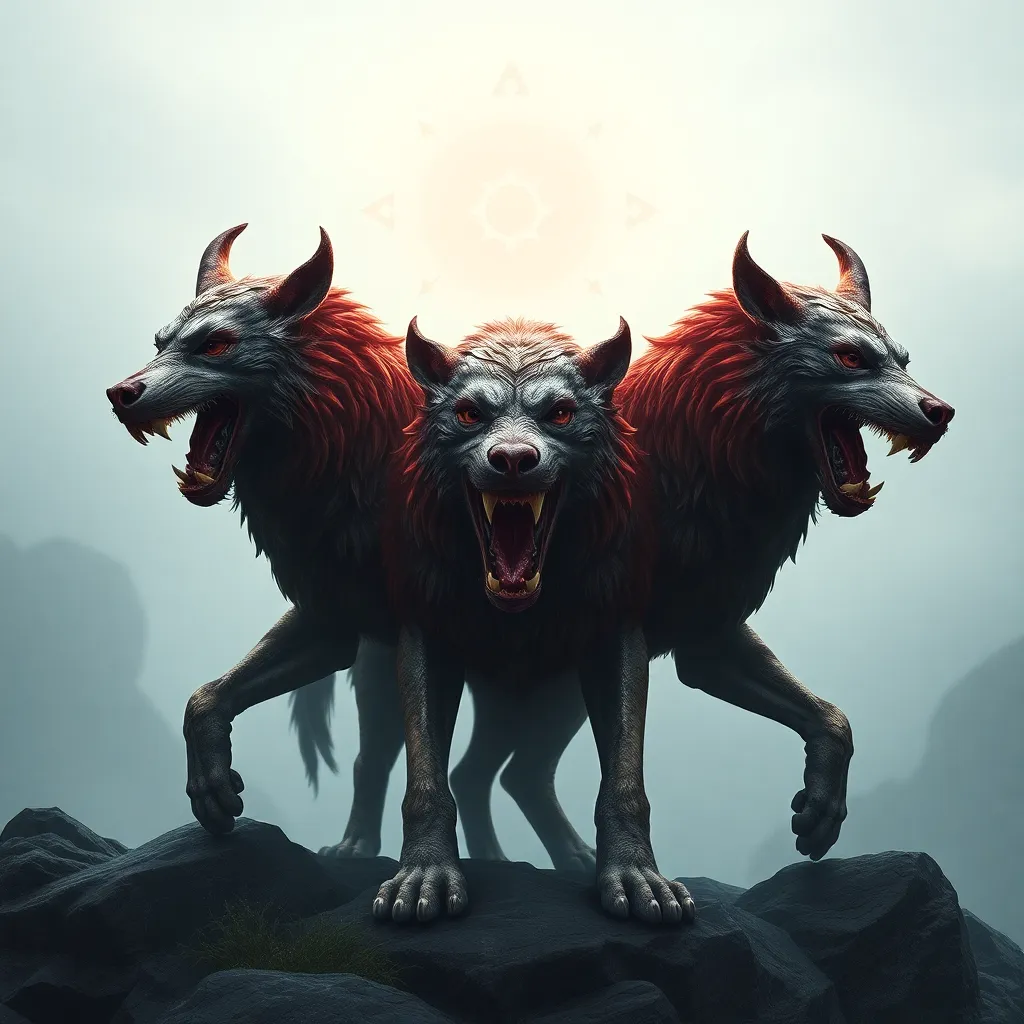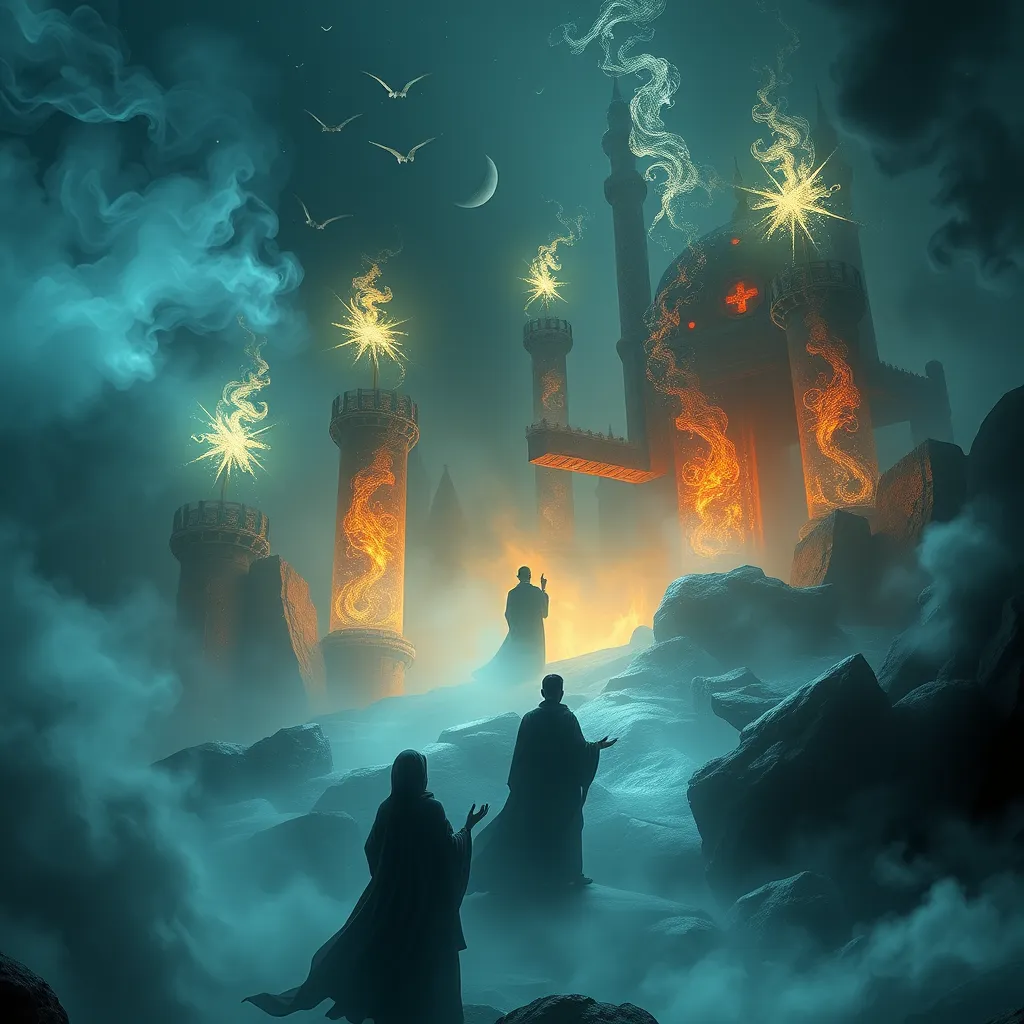The Symbolism of Cerberus: Unraveling the Deeper Meaning Behind the Three-Headed Hound
I. Introduction
Cerberus, the formidable three-headed hound of Greek mythology, has captured the imagination of countless generations. This mythical creature, often depicted as a fearsome guardian of the Underworld, symbolizes a plethora of concepts that resonate deeply within human culture and psychology. The importance of symbolism in mythology cannot be overstated, as these symbols often reflect the values, fears, and aspirations of the societies that create them. In this article, we will explore the deeper meanings behind Cerberus and unravel the layers of symbolism associated with this iconic figure.
II. The Mythological Origins of Cerberus
Cerberus is primarily known from ancient Greek mythology, where he is described as a monstrous dog with three heads, a serpent for a tail, and multiple canine heads protruding from his back. According to myth, Cerberus was the offspring of the monstrous couple Typhon and Echidna, which is indicative of his fearsome nature.
A. Description of Cerberus in Greek Mythology
As the guardian of the Underworld, Cerberus was tasked with preventing the souls of the dead from escaping and ensuring that the living could not enter without permission. This role highlights the significance of boundaries in human existence, representing the inevitable separation between life and death.
B. Role as the Guardian of the Underworld
Cerberus’ primary function as the guardian of Hades is a crucial aspect of his character. He is often depicted as a fierce protector, embodying the idea that death is not to be taken lightly. His presence signifies the finality of death and the importance of respecting the boundaries of the afterlife.
C. Historical Interpretations and Variations Across Cultures
While Cerberus is most commonly associated with Greek mythology, similar figures can be found in other cultures. For example, in Roman mythology, he is known as “Cerberus” as well, but variations exist in other ancient civilizations, such as the Egyptian god Anubis, who also acted as a guide for souls in the afterlife. These interpretations reflect humanity’s universal fascination with death and the afterlife.
III. The Three Heads: Symbolic Interpretations
The most striking feature of Cerberus is undoubtedly his three heads. Each head carries its own symbolic significance, contributing to the overall meaning of this creature.
A. Representation of Past, Present, and Future
One interpretation of the three heads is that they represent the past, present, and future. Each head can symbolize a different temporal perspective, reflecting the cyclical nature of life and death. This interpretation encourages us to consider our relationship with time and the inevitability of mortality.
B. Duality of Nature: Life and Death
Another interpretation of Cerberus’ three heads is the duality of life and death. The heads can be seen as representing the coexistence of life and death, highlighting the delicate balance between the two. This duality emphasizes the importance of acknowledging both the joys and sorrows of existence.
C. The Heads as Manifestations of Human Emotions
Each head of Cerberus can also be interpreted as a representation of different human emotions. For instance, one head may symbolize fear, another loyalty, and the third anger. This interpretation underscores the complexity of human emotions and the ways in which they can govern our actions and relationships.
IV. Cerberus and the Concept of Liminality
Cerberus embodies the concept of liminality, acting as a threshold between two worlds.
A. The Threshold Between the Living and the Dead
As the guardian of the Underworld, Cerberus represents the boundary between the living and the deceased. He serves as a reminder of the fragile nature of life and the inevitability of death.
B. Cerberus as a Boundary Figure
Cerberus’ role as a boundary figure emphasizes the importance of transitions and the significance of crossing thresholds in life. Whether it be the transition from life to death or from innocence to experience, Cerberus stands as a sentinel, reminding us of the transformations we undergo.
C. Symbolism in Relation to Transitions and Transformations
The presence of Cerberus in mythology highlights the complexity of transitions and the often tumultuous nature of change. His intimidating presence serves as a warning that transformation can be fraught with challenges.
V. Cerberus in Literature and Art
Cerberus has been depicted in various ancient texts and artistic representations throughout history.
A. Depictions in Ancient Texts (e.g., Homer, Virgil)
In ancient literature, Cerberus appears in works by authors such as Homer and Virgil. In Virgil’s “Aeneid,” for instance, the hero Aeneas encounters Cerberus while navigating the Underworld, highlighting the creature’s formidable nature and its role in guarding the realm of the dead.
B. Influence on Modern Literature and Pop Culture
In modern literature and pop culture, Cerberus continues to be a powerful symbol. From fantasy novels to films, the three-headed hound has inspired countless interpretations that explore themes of loyalty, fear, and the supernatural.
C. Artistic Representations and Their Interpretations
- Ancient sculptures and paintings often depict Cerberus in a fearsome light, emphasizing his role as a guardian.
- Modern artists may reinterpret Cerberus to explore contemporary themes, such as mental health and the struggles between inner demons.
VI. Cerberus as a Metaphor for Fear and Protection
Cerberus embodies both fear and protection, serving as a complex metaphor in mythology.
A. The Guardian Role as a Protective Force
As the gatekeeper of the Underworld, Cerberus serves a protective role, ensuring that the dead remain undisturbed. This guardian aspect reflects humanity’s instinct to protect loved ones and sacred spaces.
B. Fear of the Unknown and the Afterlife
Cerberus also symbolizes the fear of the unknown, particularly concerning death and the afterlife. His intimidating presence evokes anxiety about what lies beyond life, mirroring the fears that many individuals experience when contemplating mortality.
C. Cerberus as a Reflection of Human Anxieties
As a symbol of fear, Cerberus represents the anxieties that arise from our understanding of death and the afterlife. This connection to human emotion makes Cerberus a relevant figure across various contexts.
VII. Cerberus in Modern Contexts
In contemporary society, Cerberus continues to hold symbolic significance.
A. Cerberus’ Symbolism in Contemporary Media
Modern literature, film, and video games often feature Cerberus as a character or symbol, representing loyalty, vigilance, and the struggles of confronting one’s fears.
B. The Evolution of Its Meaning in Modern Culture
As society evolves, so does the interpretation of Cerberus. While he still embodies fear and protection, contemporary adaptations may also emphasize themes of companionship and loyalty.
C. Cerberus as a Symbol of Loyalty and Vigilance
In many modern interpretations, Cerberus is portrayed as a loyal companion, emphasizing the importance of fidelity and dedication in relationships, whether human or animal.
VIII. Conclusion
In summary, Cerberus serves as a powerful symbol with multifaceted meanings rooted in mythology. From representing the boundaries between life and death to embodying the complexities of human emotions, Cerberus remains relevant in modern society. As we continue to explore the significance of mythological symbols, understanding Cerberus allows us to confront our fears, acknowledge our anxieties, and appreciate the enduring power of storytelling in shaping our perceptions of life and death.



